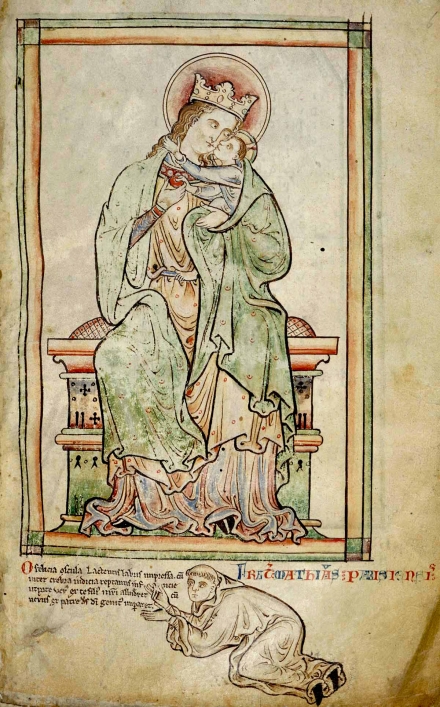
The gothic is an authentic and distinct style of liturgical art that emerged first in the 12th century and lasted until the 16th century in various forms, and re-emerged in the 19th and early 20th centures as an influential style.
If we are looking for a starting point for the rejuvination of American sacred art, and more broadly even American culture, I suggest that the gothic could be one starting point. I suggest this because historically, Americans have responded strongly to the gothic style and in the first part of the 20th century in particular created some of the most spectacular works of gothic architecture in churches, civic buildings and universities. I suggest that this is because it was natural for American to do so – they responded to the gothic style because, like the English culture that contributed so much to its founding . There is not suggestion that this is the only such style, incentally. I think that we should be ready to try styles that seem right and see what takes off culturally.
It is no accident, I suggest, that one of the most popular American paintings is called American Gothic. It is hated by the critics, but was loved by the public. Painted in the 1930s by Grant Wood, the style is based on the late gothic style of Jan Van Eyck.
The gothic style of art developed organically from the Romanesque style in the West,. The Romanesque artistiic style is true to the iconographic prototypes and is as much part of the iconographic tradition as any Greek or Russian icon. As the change was gradual any attempt to date the beginning of the gothic period will necessarily involve some arbitrary choice. Most commentators settle on the mid-12th century, which coincides with the building of what is now considered to be the first gothic church, St Denis in Paris, and which was completed in 1144 AD. The name ‘gothic’ incidentally was coined by commentators from the time of the High Renaissance and was originally intended as a pejorative term. They were suggesting that it was a barbaric style, naming it after the people who overran the Roman empire in the West a thousand years earlier.
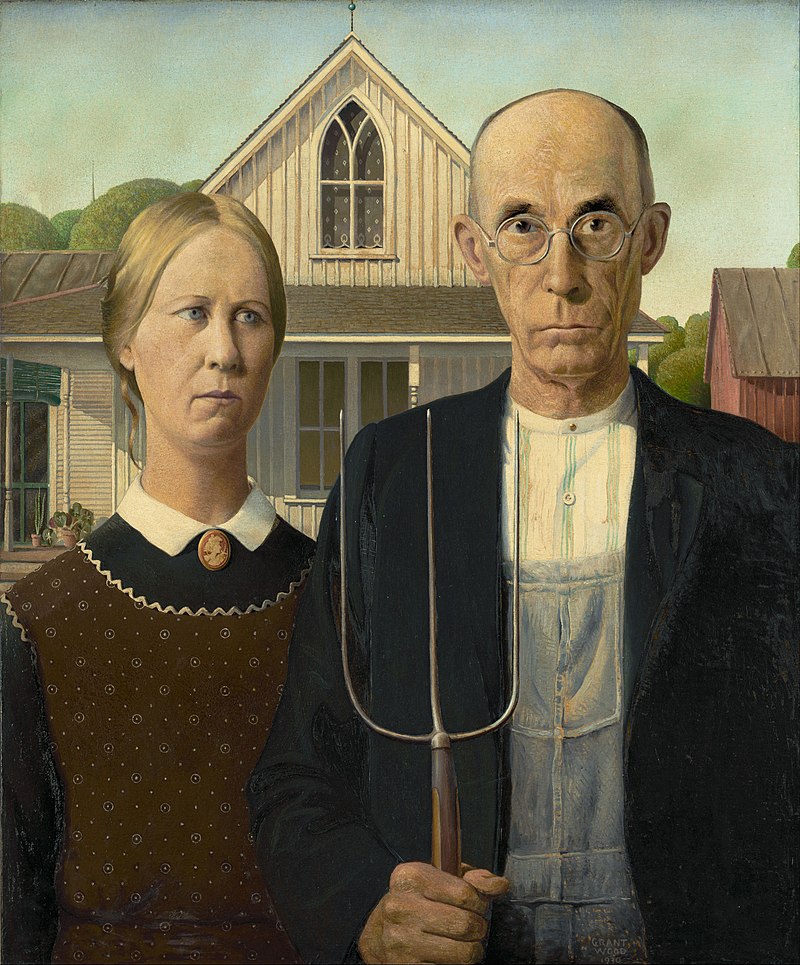
Historically, the original gothic style of art developed organically from the Romanesque style in the West,. The Romanesque artistiic style is true to the iconographic prototypes and is as much part of the iconographic tradition as any Greek or Russian icon. As the change was gradual any attempt to date the beginning of the gothic period will necessarily involve some arbitrary choice. Most commentators settle on the mid-12th century, which coincides with the building of what is now considered to be the first gothic church, St Denis in Paris, and which was completed in 1144AD. The name ‘gothic’ incidentally was coined by commentators from the time of the High Renaissance and was originally intended as a pejorative term. They were suggesting that it was a barbaric style, naming it after the people who overran the Roman empire in the West a thousand years earlier.
The impetus for the departure from the faithful adherence to the iconographic prototype of the Romanesque style occurred as a result of a development in the way in which Creation was viewed by Christian. In the gothic period there was an increasing sense of the reliability of human experience and the value of information received through the senses, which led to an increase in curiosity about, and appreciation of, the beauty of the natural world. This in turn led to more intense observation of nature by painters which was reflected in a greater degree of naturalism in their art.
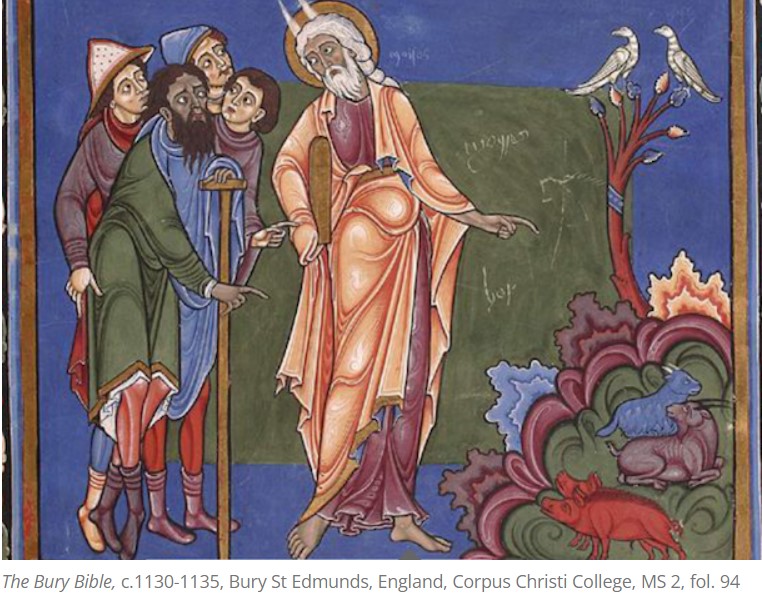
This viewpoint was not new in essence – Christians had always relied on information from the senses and appreciated the beauty of the cosmos. What was different from the previous age was the degree to which people trusted their senses to give them accurate information about the world around them. When combined with an intense curiosity and a devotion to rational enquiry, this transformed the culture in many ways. One such change was that as a result to this new approach to learning great universities such as Paris and Oxford were founded.
Tied in with this change is an increased emphasis on the belief that that the world we live in, although fallen and imperfect, is nevertheless good, ordered, and beautiful. So, it was held, while there may be evil and suffering in the world, and it may not be as good and beautiful as it ought to be, it is nevertheless God’s creation and still good and beautiful. This appreciation of the world as it is, as distinct from what it will be when redeemed, is what caused the rise in the correspondence of art to natural appearances, and the development of natural science.
A number of factors combined to cause this. Around 1000 AD the Latin West increased contact with the Greek East and Islam through trade and warfare (for example the crusades and the Reconquista – the reconquest – of Spain from the Moors (Toledo fell, for example, in 1085). This gave Western Europe access for the first time to many lost works of classical writers, particularly in the form of Arabic transcriptions of Aristotle. For the next hundred years Christian, Jewish, and Muslim scholars collaborated on the translation and interpretation of these texts. It was the friars of the new mendicant orders, Franciscans and Dominicans, who managed to achieve this synthesis of the new learning with the earlier tradition coming from St. Augustine and the Church Fathers. The most significant of these figures is St Thomas Aquinas, the Dominican. It was this synthesis of the ancient Greek philosophy of Aristotle with the Christian understanding of creation that was the intellectual achievement of the age.
This age was not only characterized by the creation of new ideas, but also by the drive to popularize them. The preaching of the Dominicans and appeal of the spirituality of St Francis of Assisi led to a broader appreciation of the good of the natural world as part of God’s creation. This gave rise to cultural movements that were driven by a desire for holiness and by great artists, as much as it was by great thinkers.
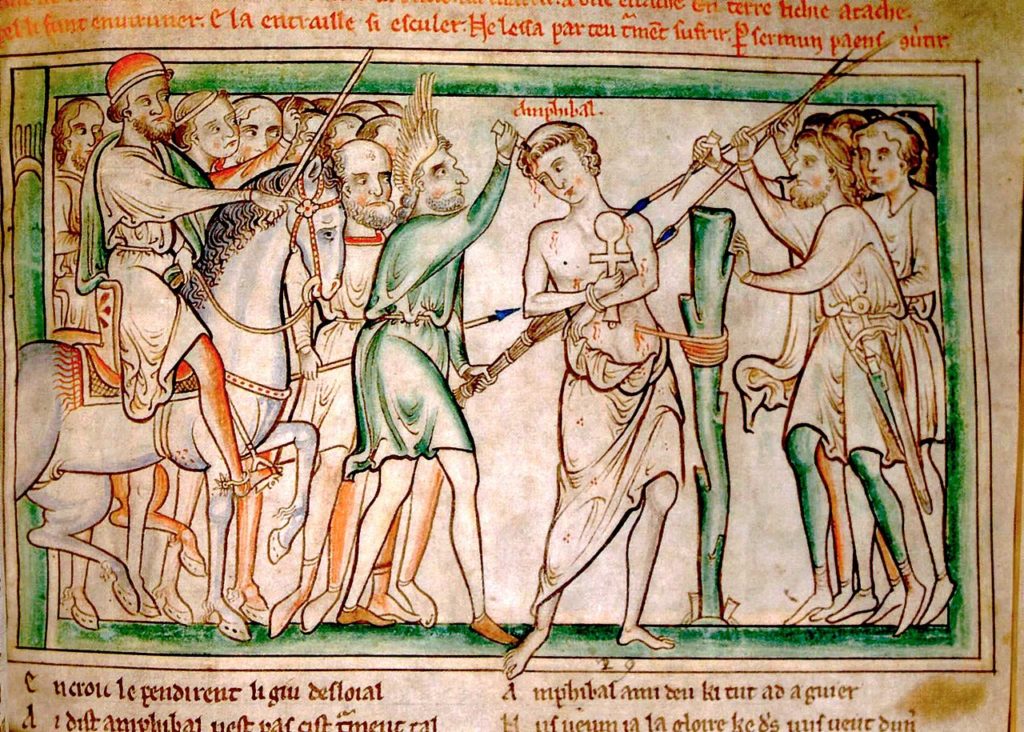
The New Naturalism
The greater emphasis in direct observation in art led to an enhanced naturalism, which was fused to a stylistic substrate which was iconographic. So, what began in the Romanesque period as what is best described as a more naturalistic iconographic style (compared with earlier Western iconographic forms), at a certain point became so naturalistic that it broke the boundaries of what constituted an icon (for example, through the introduction of cast shadow, the depiction of people in profile and eventually the use of perspective). Nevertheless, the gothic always owes something stylistically to the iconographic. It retains, for example, that emotional distance that is maintained in the portrayal of figures. As a result, the observer always feels slightly detached from the scene described. If one looks even at late gothic styles, such as in the Flemish artists Van Eyck or Hieronymus Bosch, we can see how much it owes to the iconographic style in this respect.
If one were to try characterize gothic art theologically, we would say that it is now too naturalistic to be considered a portrayal of man in heaven, that is ‘eschatological’ man (as with the iconographic style) and not naturalistic enough to be considered a portrayal of fallen ‘historical’ man (as with the baroque style). I place it, therefore, in a position that straddles the divide between the two. When man is baptized, confirmed and living the sacramental life he is, even in this life, transfigured partially. We may not see it ourselves but that transformation is real. We are, to use the phrase of St Peter in his letters, ‘partaking of the divine nature’ and are no longer totally fallen. This transformation is complete when we are in full union with God in heaven, as eschatological men and women, but while we are on this pilgrimage to heaven, as part of the mystical body of Christ in this life, we are all gothic men and women.
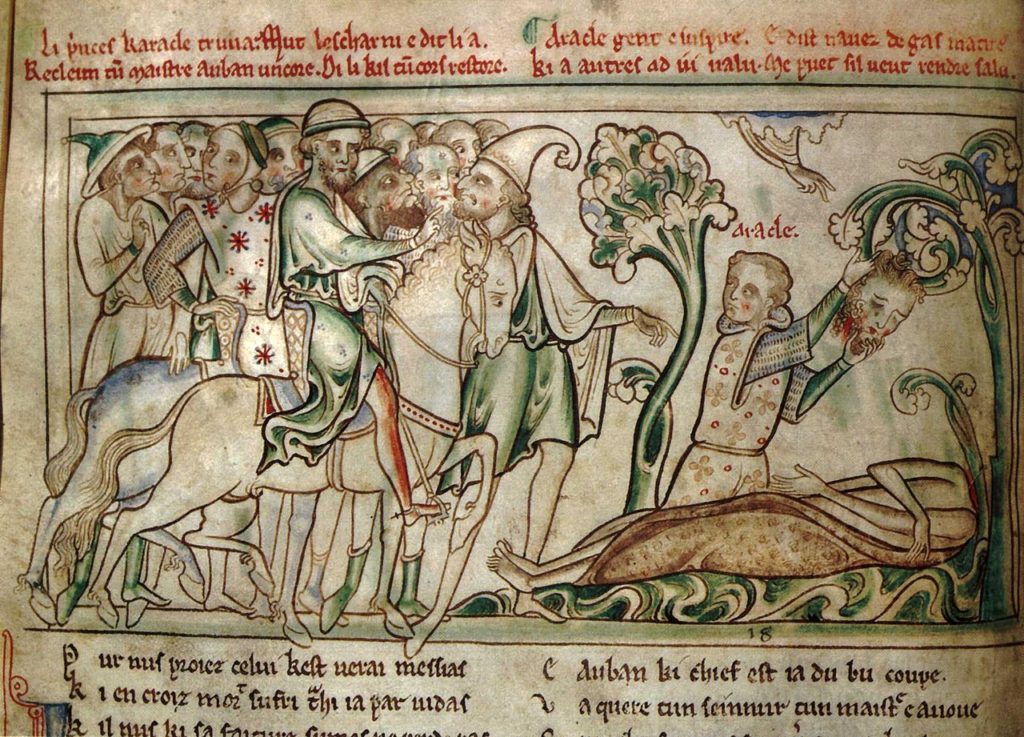
Interestingly the gothic age is characterized as an age of pilgrimages. Many of the great cathedrals were pilgrimage destinations and so it is fitting perhaps for this reason also to characterize gothic art as the art of pilgrimage.
If we wanted a single symbol of this age, it is probably not art, but architecture that gives it so us in the form of dozens of gothic cathedrals and churches built in France and England. The new learning led not only to a new approach in design, again developing gradually from the Romanesque styles that preceded them, but also to the advances in engineering that allowed for the creation of higher, and more complex structures with larger windows. These stained-glass windows then became works of art that manifested the same stylistic elements of gothic paintings and illuminations, except now in the medium of colored glass. The gothic spire itself is a symbol of this age of pilgrimage in that, more than any other feature in architecture before or since, it seems to span the divide between heaven and earth.
As an example of the new gothic art we can consider the work of Matthew Paris who was an English monk who lived in St Albans, a town in southern England in the 13th century. We have many examples of his sketches in pen and ink which are observations of the natural world around him. He also illuminated psalters such as the Westminster Psalter. This one is taken from a manuscript which is the Life of St Alban ‘Heraclius takes down St. Alban’s head’. Saint Alban is venerated as the first-recorded British Christian martyr. He was martyred in Verulanium, modern day St Albans in southern England, sometime during the 3rd or 4th century, and his cult has been celebrated there since Matthew Paris’s art is characteristic of English art at the time, in which the description of form is by line alone. He is masterful in his control of the quill pen to create smooth and rhythmically flowing lines. He controls also the darkness and width of line to draw our eye to the important parts of the composition. The coloration and shading is restrained. This helps to give his images a symbolic quality that is appropriate for sacred art. Many wall paintings of this period can still be found in churches in England (including St Albans Cathedral) and they follow this basic structure.
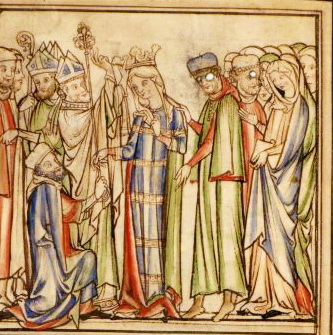
In many ways the style is reminiscent of modern illustration and animation art which is familiar to so many people today. It has occured to me therefore, that this could be form that 21st-century artists might take to easily and develop into a form that connects with people today. It is powerful yet simple.
For this reason, I paint in the ‘St Albans’ style myself.
In the modern era we are used to seeing line describing form in illustrations and cartoons, which is of course a different purpose than sacred art. While the subjects are very different, the skills involved in creating the art are similar.
From the American Gothic | David Clayton | gothic | Ivy League | Matthew Paris | Princeton series
View more Posts